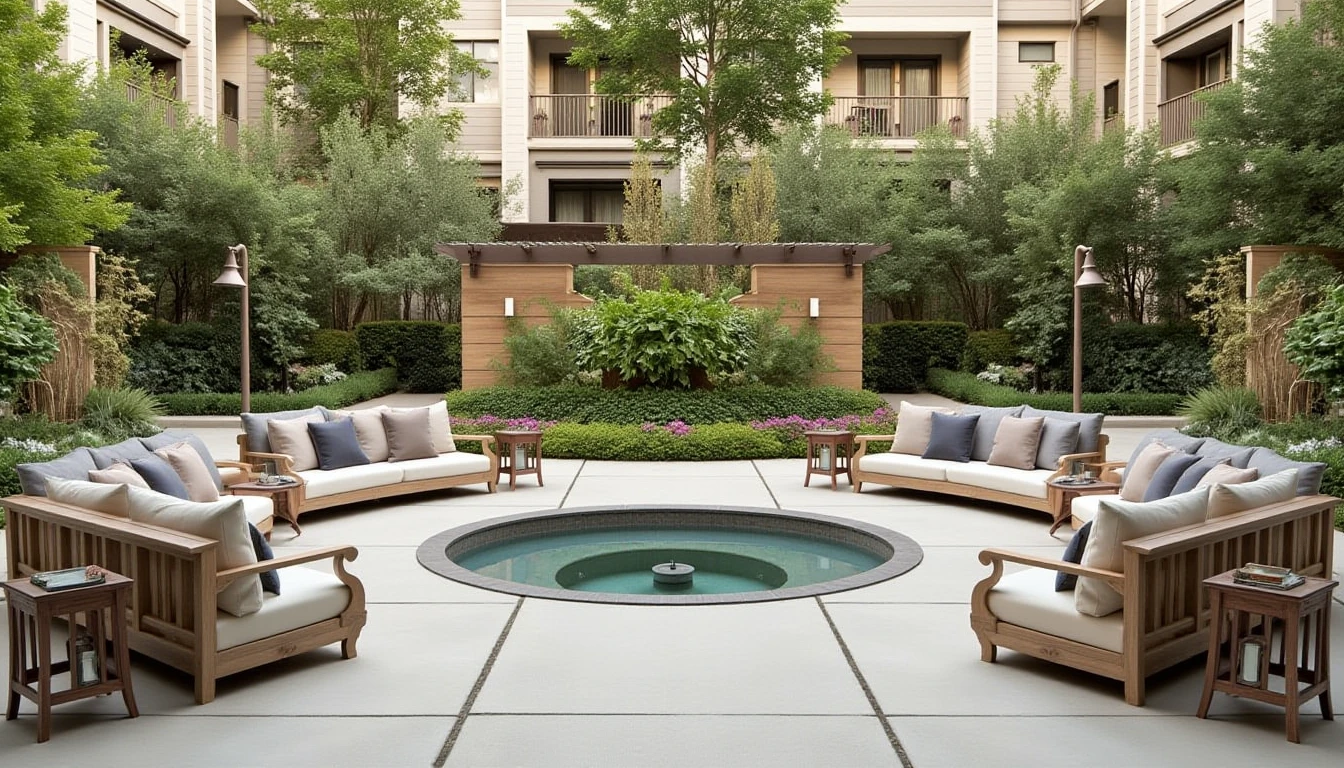The Rise of Wellness-Focused Luxury Real Estate
In recent years, luxury real estate has undergone a significant transformation as health and wellness have become increasingly important to high-end buyers. This shift reflects the growing awareness of the importance of physical and mental well-being in our fast-paced, stress-filled world. As a result, developers are now incorporating more health-focused amenities into their properties to attract discerning clients who prioritize a healthy lifestyle.
Wellness-oriented luxury properties offer numerous benefits that cater to the holistic needs of their residents. From state-of-the-art fitness centers with personal training services to indoor/outdoor spaces designed for meditation and yoga practices, these properties provide residents with convenient access to resources that promote overall health and well-being. Furthermore, wellness-focused amenities can also enhance social connections among neighbors by creating opportunities for shared experiences centered around healthy living.
The demand for luxury real estate with integrated wellness features is on the rise as more individuals seek ways to incorporate healthier habits into their daily routines without sacrificing convenience or comfort. Developers who recognize this trend and invest in incorporating these elements into their properties are likely to attract a wider range of buyers interested in maintaining an active, balanced lifestyle within their homes.

Key Features of Wellness-Focused Luxury Properties
Wellness-focused luxury real estate often includes a variety of features designed to promote physical and mental health. These properties typically offer spacious living areas that allow for natural light and fresh air circulation, contributing to improved well-being by creating an environment conducive to relaxation and rejuvenation. Additionally, many wellness-oriented developments incorporate sustainable design elements such as energy-efficient appliances, green roofs, or rooftop gardens – not only enhancing the aesthetic appeal of the property but also providing residents with opportunities to engage in eco-friendly activities like gardening or outdoor exercise.
Another key feature found in wellness-focused luxury properties is access to high-quality healthcare services. Many developers are partnering with renowned medical professionals and institutions to offer on-site clinics or concierge health programs that provide residents with personalized care plans tailored to their specific needs. Such initiatives demonstrate a commitment to prioritizing resident well-being by making essential healthcare resources readily available within the community.
Moreover, luxury properties emphasizing wellness often boast impressive recreational facilities equipped with cutting-edge technology and amenities aimed at promoting physical fitness. These may include state-of-the-art gyms featuring premium equipment from top brands, dedicated studios for group exercise classes like spinning or pilates, as well as spacious multipurpose rooms perfect for hosting events focused on healthy living.
The Impact of Wellness-Focused Amenities on Property Value
The inclusion of health-focused amenities can significantly enhance the value and desirability of luxury properties. These features not only cater to the growing demand for wellness-oriented real estate but also provide a competitive edge in an increasingly crowded market. By offering residents unique opportunities to prioritize their well-being within the comfort of their own homes, developers are able to differentiate themselves from competitors while attracting a wider range of buyers.
Additionally, luxury properties with integrated wellness features often enjoy higher occupancy rates and longer tenant stays compared to those lacking such amenities. This is because tenants who value their health tend to be more loyal and committed to maintaining a healthy lifestyle within their living spaces – factors that contribute positively towards overall property performance metrics like rental income stability or resale potential.
Furthermore, research has shown that investments in wellness-oriented real estate tend to yield stronger returns over time due partly to increased tenant retention rates coupled with rising interest from buyers prioritizing holistic well-being. As more individuals seek ways to incorporate healthier habits into their daily routines without sacrificing convenience or comfort, properties featuring comprehensive wellness amenities stand poised for success both now and in the future.
The Future of Wellness-Focused Luxury Real Estate
As awareness around the importance of health continues growing among affluent consumers globally, it is clear that wellness-focused luxury real estate will play an increasingly vital role within this sector moving forward. Developers who invest time understanding evolving consumer preferences while creatively integrating innovative wellness amenities into their projects stand best positioned to meet demand for these sought-after properties.
One area likely seeing significant growth involves smart-home technologies designed specifically around promoting healthier lifestyles – think automated systems controlling lighting or temperature settings based on individual user preferences aimed at enhancing sleep quality; voice-controlled devices streamlining access to mindfulness apps or guided meditation exercises; even wearables tracking biometric data in real-time providing personalized recommendations for optimizing daily routines.
Another trend expected shaping future developments involves collaboration between luxury developers and leading experts across various wellness disciplines such as nutritionists, psychologists, fitness coaches etc., who will work together designing holistic amenity packages catering to diverse needs of high-net-worth individuals interested investing more deeply into maintaining balanced lifestyles long-term.
Finally, sustainability remains a critical consideration for many affluent consumers seeking eco-friendly options when selecting luxury accommodations. Therefore, forward-thinking developers must prioritize incorporating green building practices alongside wellness-oriented designs ensuring minimal environmental impact over entire lifecycle of properties built today – an approach certain resonating with increasingly conscious buyer pools demanding greater accountability from real estate industry at large.
Conclusion
In conclusion, the incorporation of health-focused amenities into luxury real estate represents a significant trend that is likely to continue shaping the industry in the years ahead. As more individuals prioritize their well-being and seek out living spaces that support an active, balanced lifestyle, developers who invest in creating comprehensive wellness-oriented properties will be best positioned to meet this growing demand. By understanding evolving consumer preferences and collaborating with experts across various wellness disciplines while also prioritizing sustainability throughout every stage of development process itself – these forward-thinking professionals stand poised not only succeed within increasingly competitive luxury real estate landscape but also help pave way toward healthier future for all involved.

